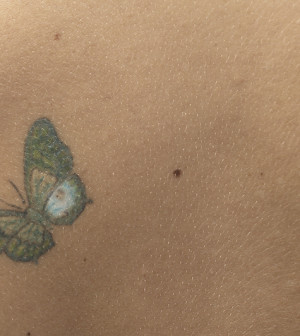- Navigating Your Midlife Crisis: Embracing New Possibilities
- City Raccoons Showing Signs of Domestication
- Mapping the Exposome: Science Broadens Focus to Environmental Disease Triggers
- One Week Less on Social Media Linked to Better Mental Health
- Your Brain Changes in Stages as You Age, Study Finds
- Some Suicide Victims Show No Typical Warning Signs, Study Finds
- ByHeart Formula Faces Lawsuits After Babies Sickened With Botulism
- Switch to Vegan Diet Could Cut Your Greenhouse Gas Emissions in Half
- Regular Bedtime Does Wonders for Blood Pressure
- Dining Alone Could Mean Worse Nutrition for Seniors
Bedbugs Biting Back Against Insecticide

Bedbugs in some American cities have developed resistance to the key insecticides used to control them, according to a new study.
It’s the first research to document bedbugs with resistance to neonicotinoids (neonics), the study authors said. Neonics are the most widely used class of insecticides.
Researchers collected bedbugs from homes in Cincinnati and Michigan and exposed them to four different neonics: acetamiprid, dinotefuran, imidacloprid and thiamethoxam. They were compared to laboratory bedbugs known to be vulnerable to neonics.
Only 0.3 nanograms of acetamiprid was needed to kill 50 percent of the nonresistant bedbugs, but it took more than 10,000 nanograms to kill 50 percent of the bedbugs from Cincinnati and Michigan.
Just 2.3 nanograms of imidacloprid killed 50 percent of the nonresistant bedbugs, but 365 nanograms and 1,064 nanograms were needed to kill the Cincinnati and Michigan bedbugs, respectively, the study found. The amounts were similar for dinotefuran and thiamethoxam.
Compared to the nonresistant bedbugs, those from Michigan were 462 times more resistant to imidacloprid, 198 times more resistant to dinotefuran, 546 times more resistant to thiamethoxam, and 33,333 times more resistant to acetamiprid.
The Cincinnati bedbugs were 163 times more resistant to imidacloprid, 226 times more resistant to thiamethoxam, 358 times more resistant to dinotefuran, and 33,333 times more resistant to acetamiprid, according to the study in the Journal of Medical Entomology.
Pest control companies “need to be vigilant for hints of declining performance of products that contain neonicotinoids,” said study author Alvaro Romero from New Mexico State University.
“For example, bedbugs persisting on previously treated surfaces might be an indication of resistance. In these cases, laboratory confirmation of resistance is advised, and if resistance is detected, products with different modes of action need to be considered, along with the use of non-chemical methods,” Romano said in a journal news release.
More information
The U.S. Centers for Disease Control and Prevention has more about bedbugs.
Source: HealthDay
Copyright © 2025 HealthDay. All rights reserved.










